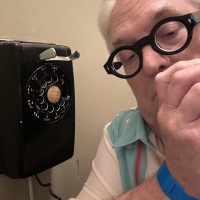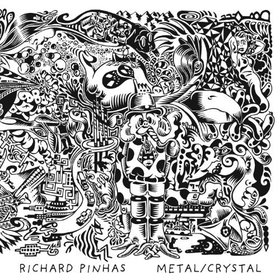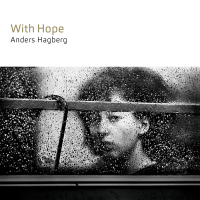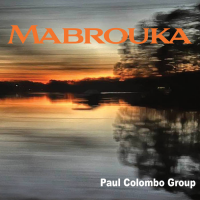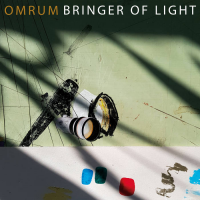Home » Jazz Articles » Reassessing » Ornette Coleman: Ornette Coleman: Something Else!!!!
Ornette Coleman: Ornette Coleman: Something Else!!!!
 Ornette Coleman
Ornette ColemanSomething Else!!!!
Contemporary
2011 (1958)
Robert Louis Stevenson noted that, "The mark of a good action is that it appears inevitable in retrospect." The middle-to-late 1950s in jazz were populated with several "good actions," all considered inevitable evolutionary reactions to earlier genre, specifically swing and bebop—the latter the complex and elevated jazz style that had dominated the creative American musical structure the decade before, and, to some degree has done so since. These unfolding styles included hard bop—perhaps the most direct descendant of bebop; modal jazz, with its harmonic reliance on scales rather than chordal structures; and, finally, free jazz, the most violent reaction possible to all of the above. Today, it is easy to say that free jazz occurred as an evolutionary response to the earlier more restrictive forms, because it is easy to write a story around a revolution that has already happened.
Because of his later, and more noteworthy Free Jazz (Atlantic, 1961), alto saxophonist and erstwhile trumpeter Ornette Coleman is a sensible starting point for the latter and most controversial response to the house that alto saxophonist Charlie Parker and trumpeter Dizzy Gillespie built. But Coleman's free jazz view was not revealed fully formed, but rather as a subtler development that initially retained the trappings of bebop while incorporating cross-sections of hard bop, slowing reforming itself over the five recordings preceding Free Jazz.
Something Else!!!! conservatively employed the standard bebop quintet (saxophone and trumpet plus rhythm section). This was (appropriately, in retrospect) the only time Coleman used this format. Hints to the future tectonic shifts were expressed through using this familiar ensemble configuration as well as the already established harmonic architecture of playing over chord changes. So, the date looks perfectly ordinary in approach. Closer inspection reveals Something Else!!!! altogether.
The opening "Invisible" bears a bebop structure into which Coleman has fitted a note and rhythm assembly that must have sounded as jarring and wrong, at the time, as pianist and composer Thelonious Monk did with his groundbreaking compositions and recordings of the late-1940s. In "Invisible," Coleman employs a fractured head, directly recalling Monk, with a wandering solo section. Integral to the sound is Billy Higgins' precise drumming, punctuating every crag and furrow of Coleman's thought.
Coleman and pianist Walter Morris extrapolate this approach of "square peg—round hole" in the soloing of the more straight forward pieces like "The Blessing" and "Jayne." Their solos are angular and often take a vertical trajectory to that expressed in the themes. Coleman accomplishes these advances while still retaining a discreet momentum and swing. Morris shares in the company of Coleman what pianist Horace Silver shared with trumpeter Miles Davis on Walkin' (Prestige, 1954), a shared blues conception, albeit in separate quantum dimensions. Cornetist Don Cherry serves as a perfect pinched foil to Miles Davis' middle register in Davis' bands.
Never far from the blues, Coleman stretches his chops on "When Will The Blues Leave" (the closest he comes to Charlie Parker soloing at half speed) and the manifold "The Sphinx" (beyond Parker). Coleman's band here could be likened to an antithesis of and outgrowth from Parker's famous quintet with Miles Davis, pianist Duke Jordan, bassist Tommy Potter and drummer Max Roach. Something Else!!!! was Coleman's necessary jumping off-point for something different, if not ultimately novel. While the groundwork for musical revolution is laid, Coleman proceeds slowly, introducing his ideas with care.
Tracks: Invisible; The Blessing; Jayne; Chippie; The Disguise; Angel Voice; Alpha; When Will The Blues Leave?; The Sphinx.
Personnel:Ornette Coleman: alto saxophone; Don Cherry: cronet; Walter Morris: piano; Don Payne: bass; Billy Higgins: drums.
Tags
Ornette Coleman
Reassessing
C. Michael Bailey
United States
Charlie Parker
Dizzy Gillespie
Thelonious Monk
Billy Higgins
Horace Silver
Miles Davis
Don Cherry
Duke Jordan
Tommy Potter
Max Roach
PREVIOUS / NEXT
Support All About Jazz
 All About Jazz has been a pillar of jazz since 1995, championing it as an art form and, more importantly, supporting the musicians who make it. Our enduring commitment has made "AAJ" one of the most culturally important websites of its kind, read by hundreds of thousands of fans, musicians and industry figures every month.
All About Jazz has been a pillar of jazz since 1995, championing it as an art form and, more importantly, supporting the musicians who make it. Our enduring commitment has made "AAJ" one of the most culturally important websites of its kind, read by hundreds of thousands of fans, musicians and industry figures every month.

